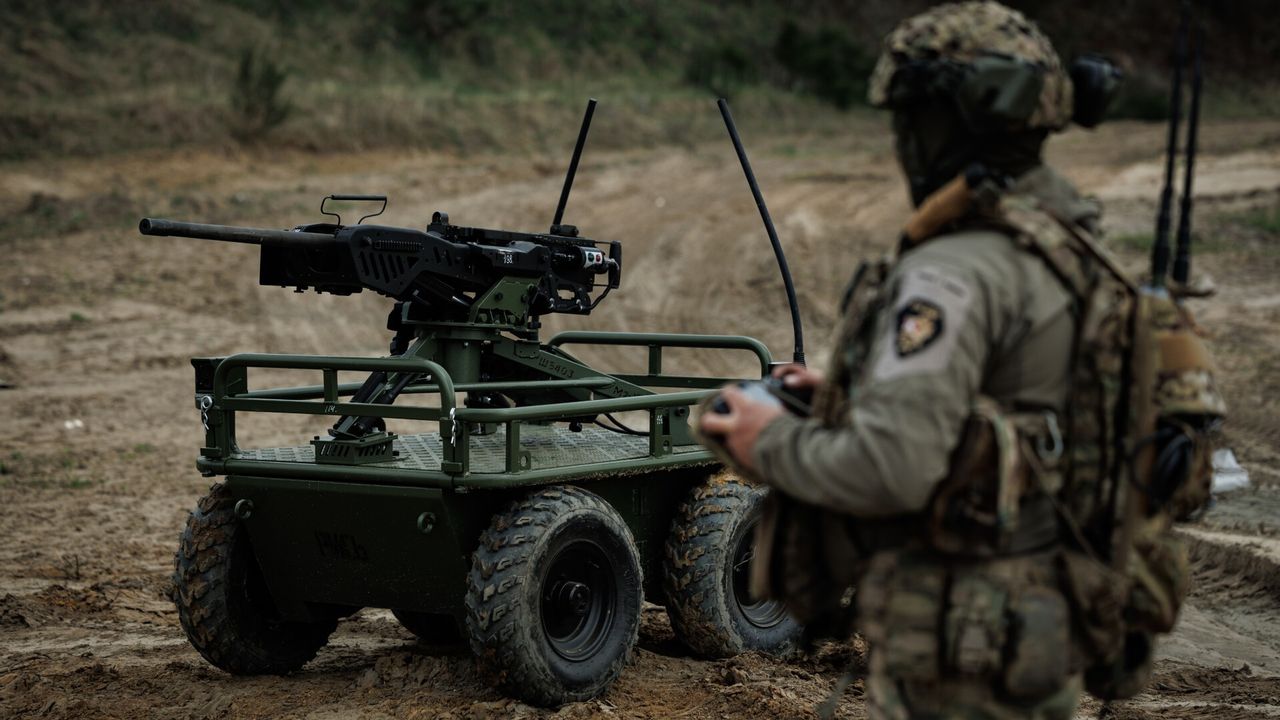The limited bandwidth from SpaceX’s Starlink satellites is hindering Ukraine’s military operations by restricting the effectiveness of ground robots on the frontlines. As Ukraine continues its fight against Russian forces, tech innovators within the country are seeking alternative solutions to enhance the capabilities of these unmanned ground vehicles (UGVs).
Over the past year, Ukraine has deployed thousands of UGVs to assist frontline troops. These robots play critical roles, including delivering supplies, evacuating the wounded, and engaging enemy forces while minimizing risks to human soldiers. Despite their potential, the bandwidth restrictions mean that individual terminals on these robots can operate with as little as 10 megabits per second. This limitation severely impacts video quality and control reliability, crucial for maneuvering in dangerous environments.
Vadym Burukin, a technologist and CEO of the drone start-up Huless, highlighted the challenges faced due to insufficient bandwidth. “If you want to drive fast, you need a frame rate of at least 30 frames per second to control the robot effectively,” he explained. “With only ten frames per second, there is a significant risk of getting trapped in a minefield or colliding with obstacles.”
The strategic value of Starlink is undeniable. According to sources linked to the Ukrainian Ministry of Defense, as many as 200,000 Starlink terminals are presently active in Ukraine, making it the largest user of Starlink services in Europe. Yet, the high demand for bandwidth, especially along frontlines, results in slow travel speeds for the robots, averaging just 6 miles per hour (10 kilometers). Andriy Dovbenko, CEO of the Ukrainian Tech Exchange network, noted that this slow pace requires UGVs to take up to two hours to cross the 12-mile-wide (20-kilometer) grey zone, where they are vulnerable to attacks.
Burukin pointed out another technical challenge: the Starlink terminals often malfunction due to the vibrations caused by rugged terrain. Environmental factors, such as clouds or rain, can further degrade the signal, complicating control efforts.
To improve performance, Ukrainian innovators are developing solutions that allow robots to operate more effectively. One promising alternative is the use of tethered drones that can ascend to 500 feet (150 meters) and carry signal repeaters, significantly extending the reach of weak radio signals. “For ground-to-ground communication, the radio signal range is just a couple of kilometers,” Burukin said. “With a repeater in the air, this range extends to over 40 kilometers (25 miles).”
These airborne repeaters enable UGVs to operate more flexibly and securely, allowing Ukrainian forces to conduct exploratory missions deeper into Russian-controlled territory without losing connection. Burukin mentioned a successful operation reaching the Donbas arena, a significant location in Donetsk, which has been under Russian control since 2014.
Despite these advancements, Dovbenko maintains that Starlink remains vital for Ukraine’s military operations. “There are many uses for Starlink in the war, but it’s not specifically designed as military technology, so it has its limitations,” he stated. He acknowledged that while alternatives are being explored, producing a viable substitute to Starlink at scale remains a challenge.
Looking towards the future, Ukrainian innovators are also investing in AI-powered autonomous navigation systems. These systems can help mitigate the impact of signal disruptions caused by jamming and other factors. The hope is that in the coming years, AI will take over many activities along the frontlines, reducing the need for real-time human oversight. While fully autonomous combat machines may not entirely replace human soldiers, they can significantly lessen the number of personnel required in the most dangerous frontline positions.
As Ukraine navigates the complexities of modern warfare, the interplay between technology and military strategy continues to evolve, with Ukrainian innovators at the forefront of this critical effort.






